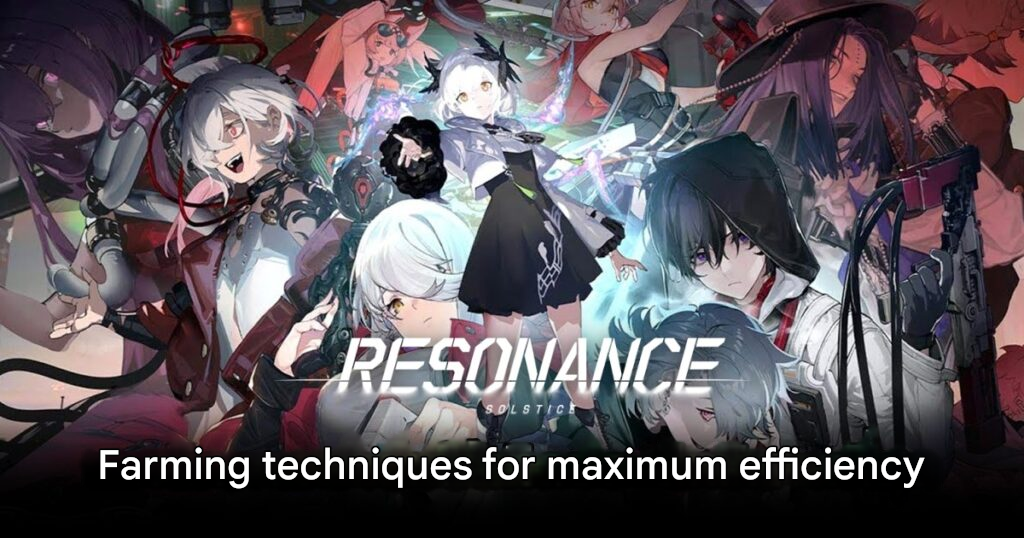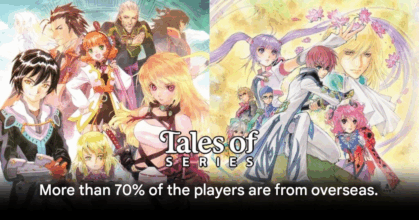Resonance Solstice: The Ultimate Resource Farming Guide

Resonance Solstice: Ultimate Techniques for Most Efficient Farming
One of the most vital elements players must master early in Resonance Solstice is the system of resource farming and in-game currency management. These two factors are the foundation for upgrading the Eternal train, enhancing equipment, powering up Resonance Cards, and maintaining efficient trade routes between cities. By effectively managing your resources and currency, you can access the game’s endgame content weeks ahead of the average player across the globe.
This guide details all resource types, identifies the best farming spots, analyzes efficiency per Stamina point, and offers professional techniques for managing daily energy and trade routes to ensure you maximize every minute spent in the game.
Understanding Resource Types and Material System
The crafting system in Resonance Solstice uses four main types of materials, each with unique sources and uses. The key is to match your farming priorities to your current development stage.
| Material Type | Primary Source | Usage | Priority |
| Morphic Dust | Pollution Zones, Morphic Monsters | Upgrades Resonance Cards and high-level equipment | High—A major bottleneck in the endgame. |
| Alloy Shards | Industrial Zones, Machine Debris | Crafting train parts and weapons | Medium—Consistently needed for upgrades. |
| Organic Fibers | Agricultural Areas, Farms | Used for crew equipment and healing items | Low—Easily found in most areas. |
| Crystal Cores | Trade Cities, Morphic Anomaly Zones | Used to enhance character Resonance power | High—Essential for character development. |
The map is divided into “City Clusters,” each with unique local resources. Synchronizing your farming routes with your cargo delivery routes provides the most efficient way to gain both materials and income.
1. Best Spots for Farming Morphic Dust (High Priority)
Morphic Dust is a rare resource essential for the late game, dropped by Morphic Beasts in highly polluted and desolate areas.
- Noctis Boundary Field: Enemies appear frequently, making it ideal for teams with Area of Effect (AoE) damage skills (e.g., Maruha or Ilona) to clear enemies quickly.
- Bonfire Fringe Outskirts: Features a high drop rate and frequent enemy spawns. It is recommended to farm during off-peak online hours to reduce competition for spawn points.
- Polluted Depot 47-B: A designated area for group farming, perfect for guild teams to collect large amounts of Morphic Dust per run.
Farming Strategy: Use low-energy teams that include a mix of healers and supporters (e.g., Maruha (DPS), Joshua (Tank), Suen (Healer), Yejue (Support), Rina Von (Buffer)). Look for “Purification Nodes” to activate a temporary 2x Drop Rate buff lasting 15–20 minutes.
2. Best Spots for Farming Alloy Shards (Medium Priority)
Alloy Shards are crucial for crafting weapons and train components, required constantly throughout the game.
| Area | Stamina Cost | Avg. Drop | Time/Run | Efficiency |
| Mechanized Forge District | 30 | 80–120 Shards | 8–10 min | ★★★★★ |
| Factory Ruins Complex | 20 | 50–70 Shards | 4–6 min | ★★★★☆ |
| Bonfire Industrial Quarter | 25 | 60–90 Shards + Core | 6–8 min | ★★★★★ |
Recommendation: Alternate farming between Mechanized Forge to prioritize sheer volume and Industrial Quarter for a beneficial mix of Alloy Shards and Crystal Cores.
3. Best Spots for Farming Organic Fibers (Low Priority)
Although the easiest resource to find, choosing the right area saves time.
- Verdant Plains Sector: Fast enemy respawn rate, suitable for continuous collection.
- Meridian Agricultural Belt: High yield per spot, reducing the number of runs needed.
- Green Haven Outskirts: Can be farmed seamlessly while traveling between cities for trade.
Advanced Technique: Avoid spending dedicated Stamina to farm Fibers. Instead, “piggyback” the collection by gathering them naturally along your established trading and resource transport routes for maximum Stamina efficiency.
4. How to Find Crystal Cores (High Priority)
Crystal Cores are unique resources that require a combination of combat and trading.
- Combat Route: Farm from Morphic Anomaly events that spawn every 45–60 minutes on the map.
- Trading Route: Take high-level Trade Contracts from major cities like Auric League Bastion, which list Crystal Cores as a direct reward.
Test Results: Trading routes yield 30–40% better returns per Stamina point than combat farming but require higher City Reputation and an upgraded train. Combat is better for early-game players who haven’t unlocked advanced trade systems yet.
5. Advanced Stamina Management
A regular player receives 240 Stamina per day (recovering 1 unit every 6 minutes). Effective allocation is key to continuous growth.
- 40% (96 Units): Spend on Limited-Time Special Events for exclusive, high-value rewards.
- 30% (72 Units): Spend on farming bottleneck resources (Morphic Dust, Crystal Cores).
- 20% (48 Units): Dedicate to advancing the Main Storyline.
- 10% (24 Units): Allocate to quick Daily Missions.
origin: ultimategacha
Our Take: The Conductor’s Calculated Grind
The true measure of a great conductor in Resonance Solstice isn’t just winning card battles; it’s about being a disciplined resource manager. The game actively rewards calculated efficiency. By treating your Stamina as a precious commodity and prioritizing the high-yield activities—especially the profitable trading routes that simultaneously net you materials like Crystal Cores—you turn the grind into a calculated investment. Mastering the Morphic Dust farm early is the difference between late-game success and perpetually hitting a development wall.






